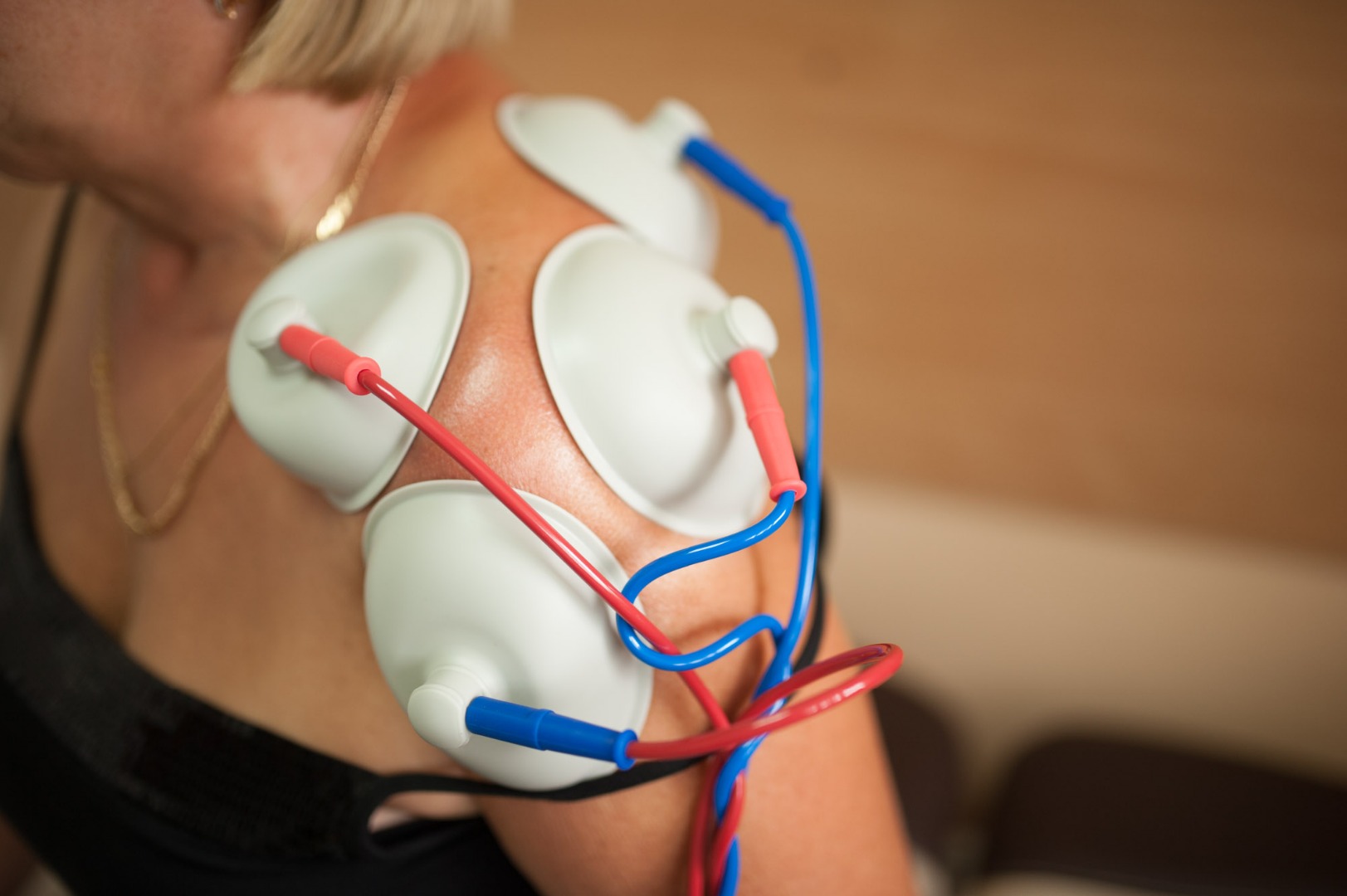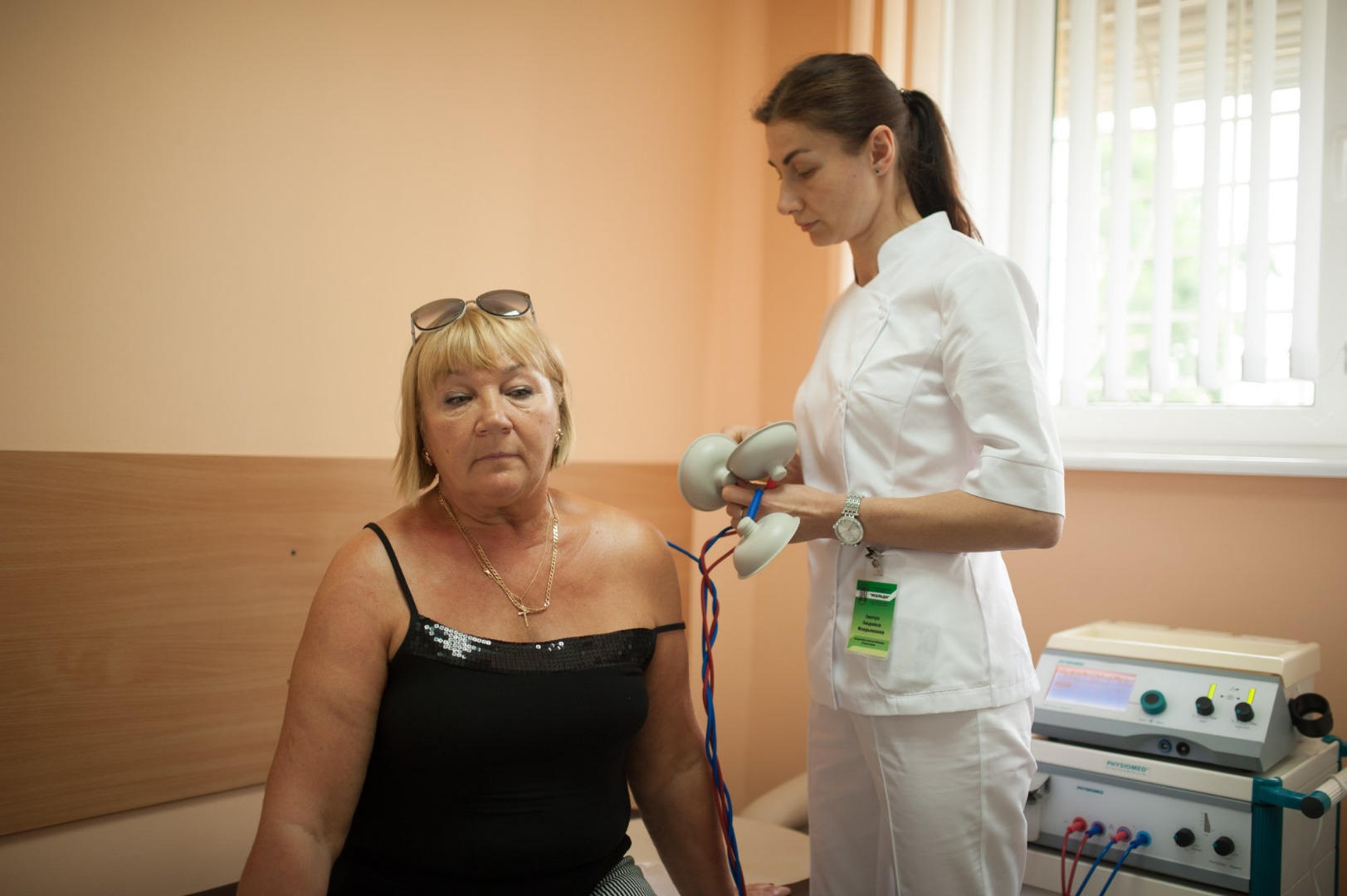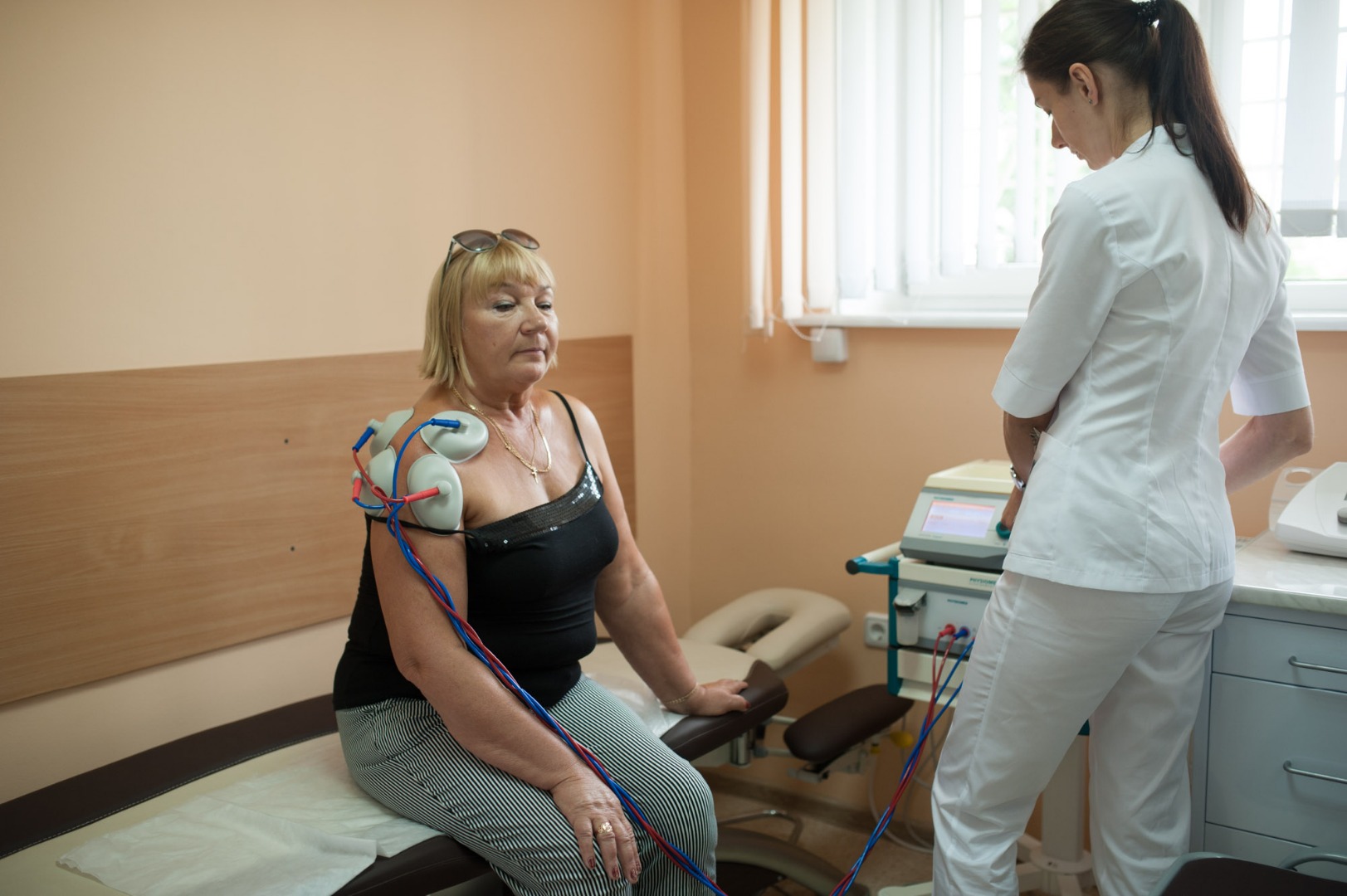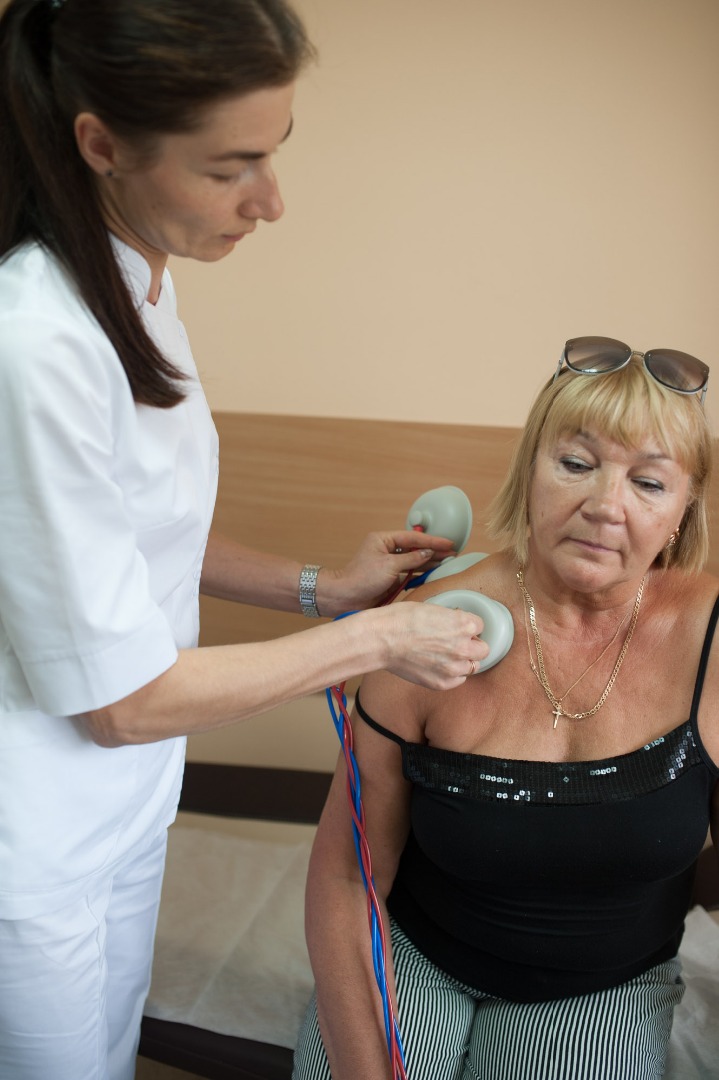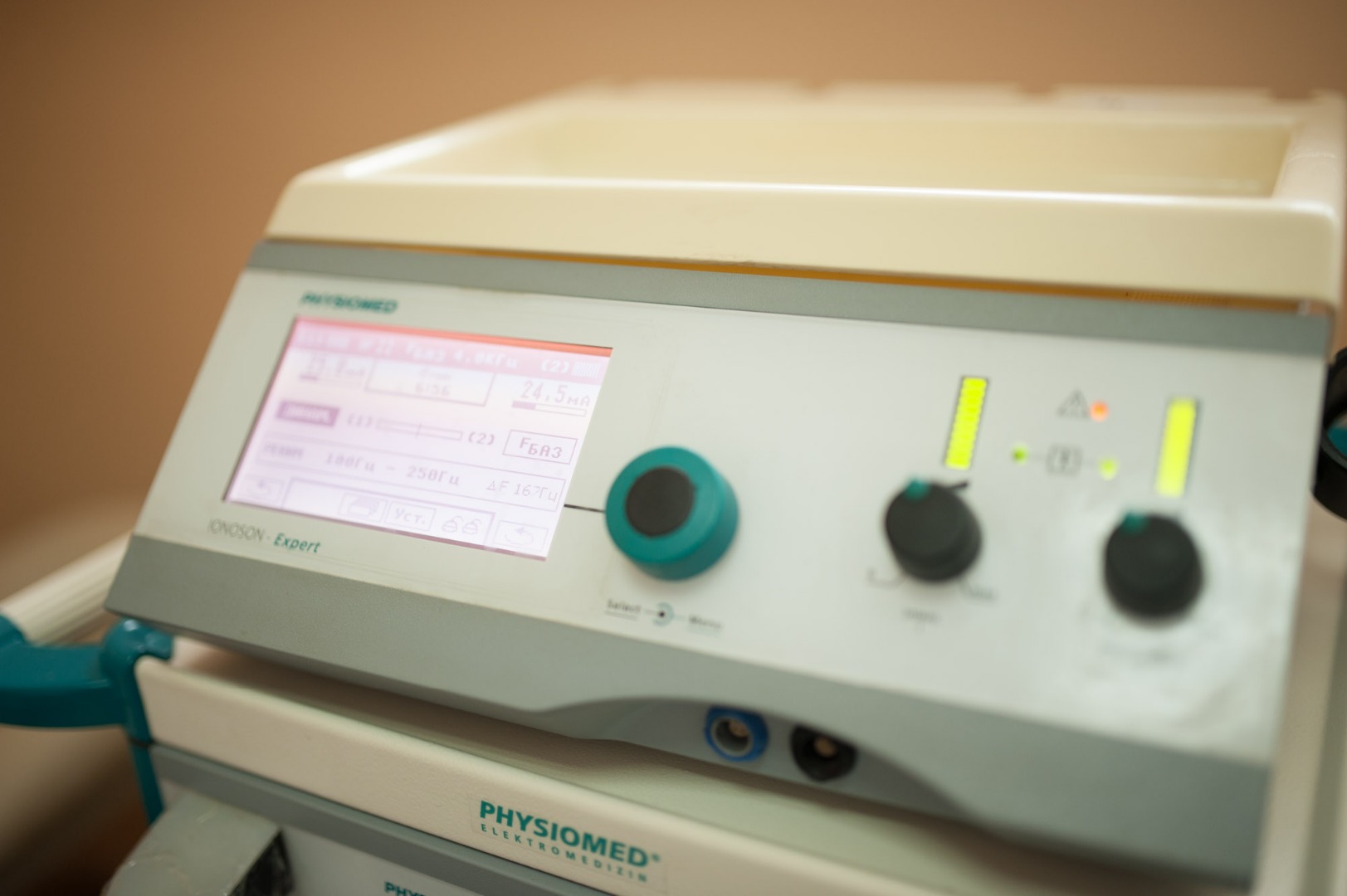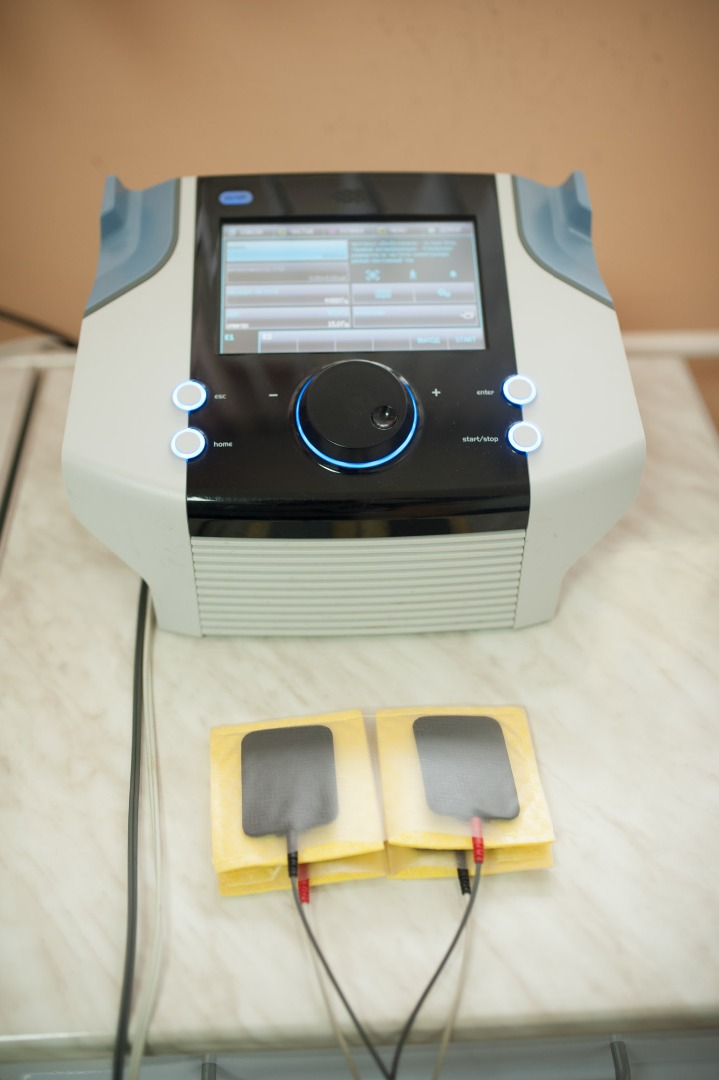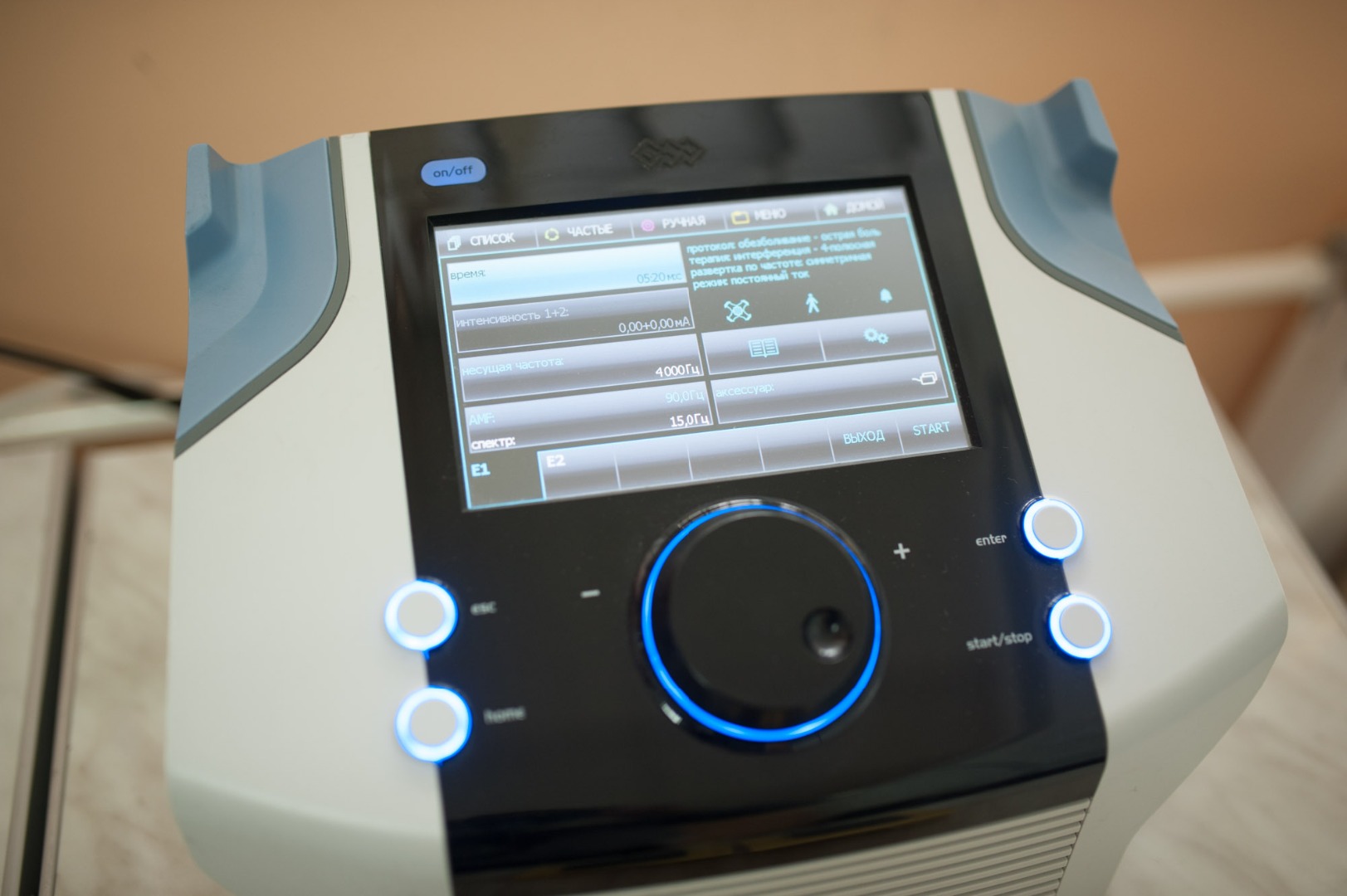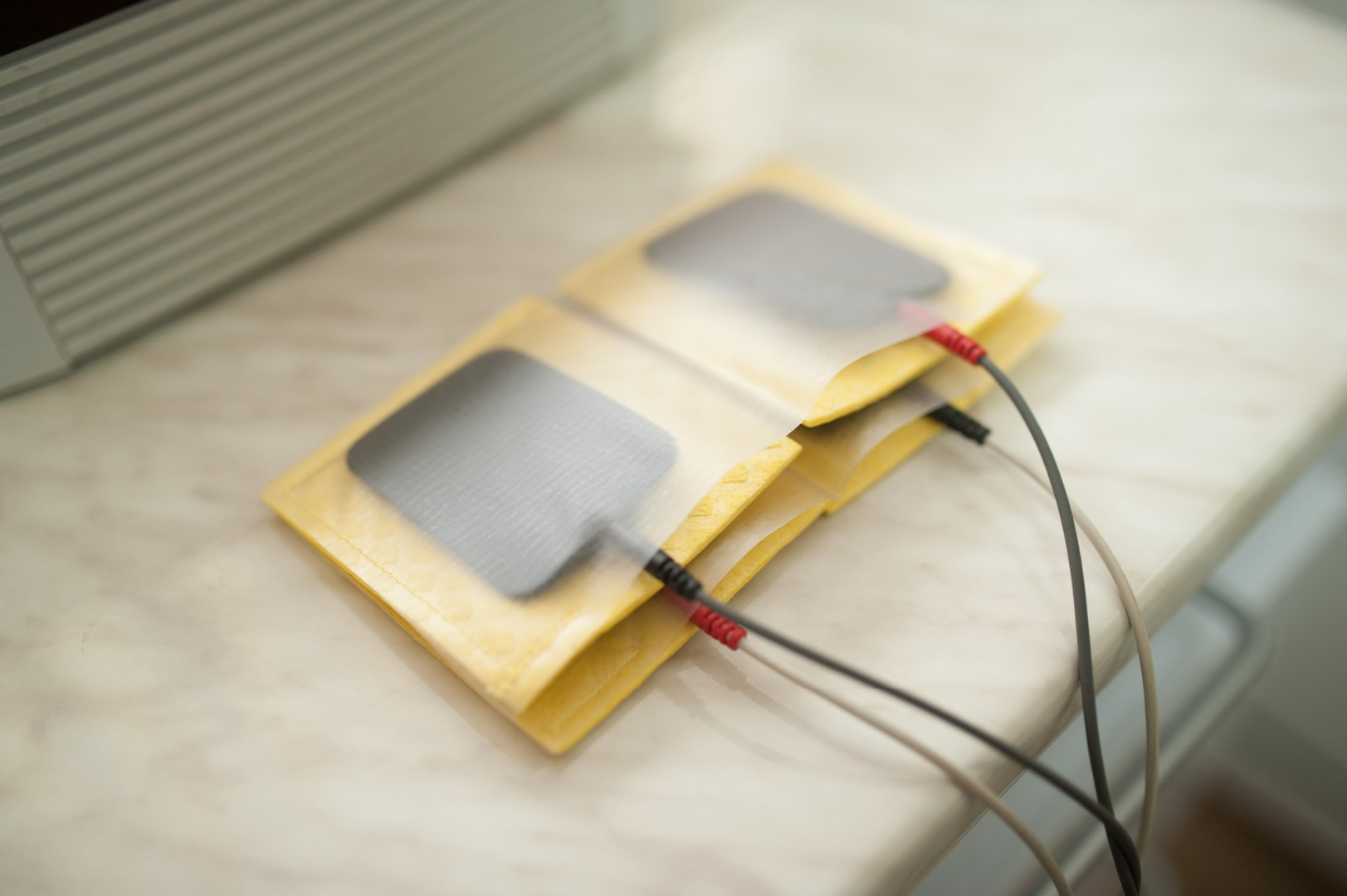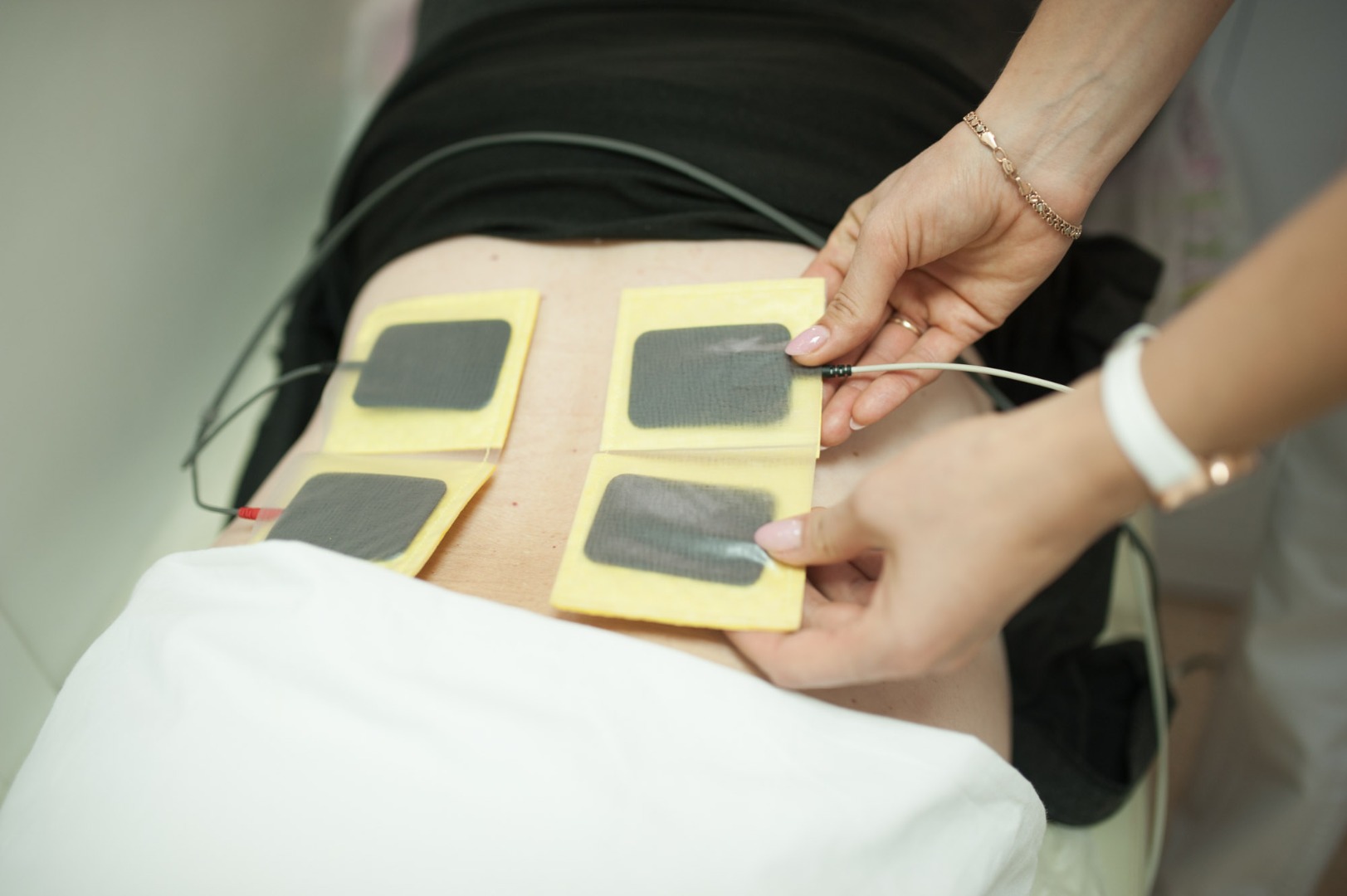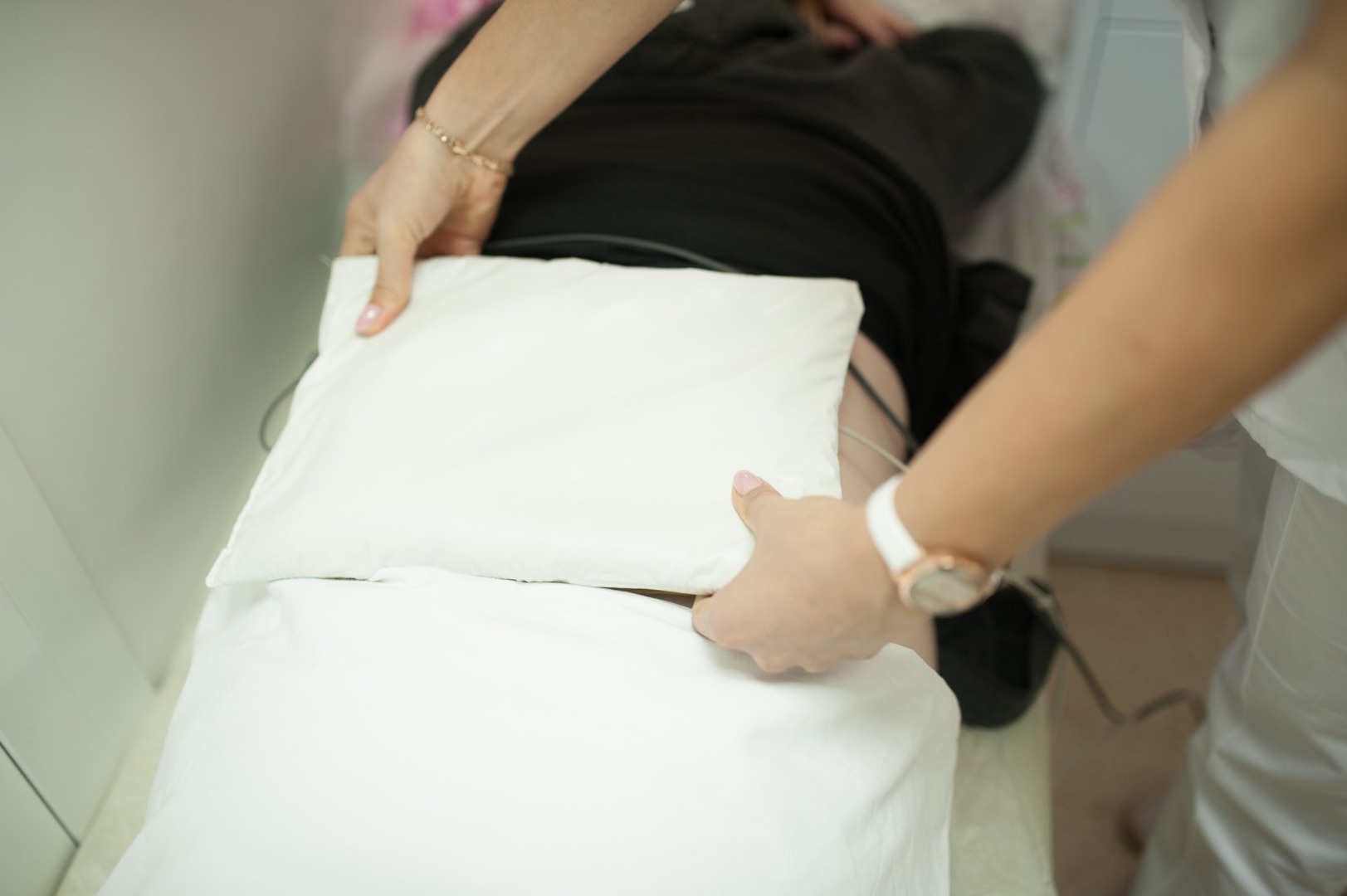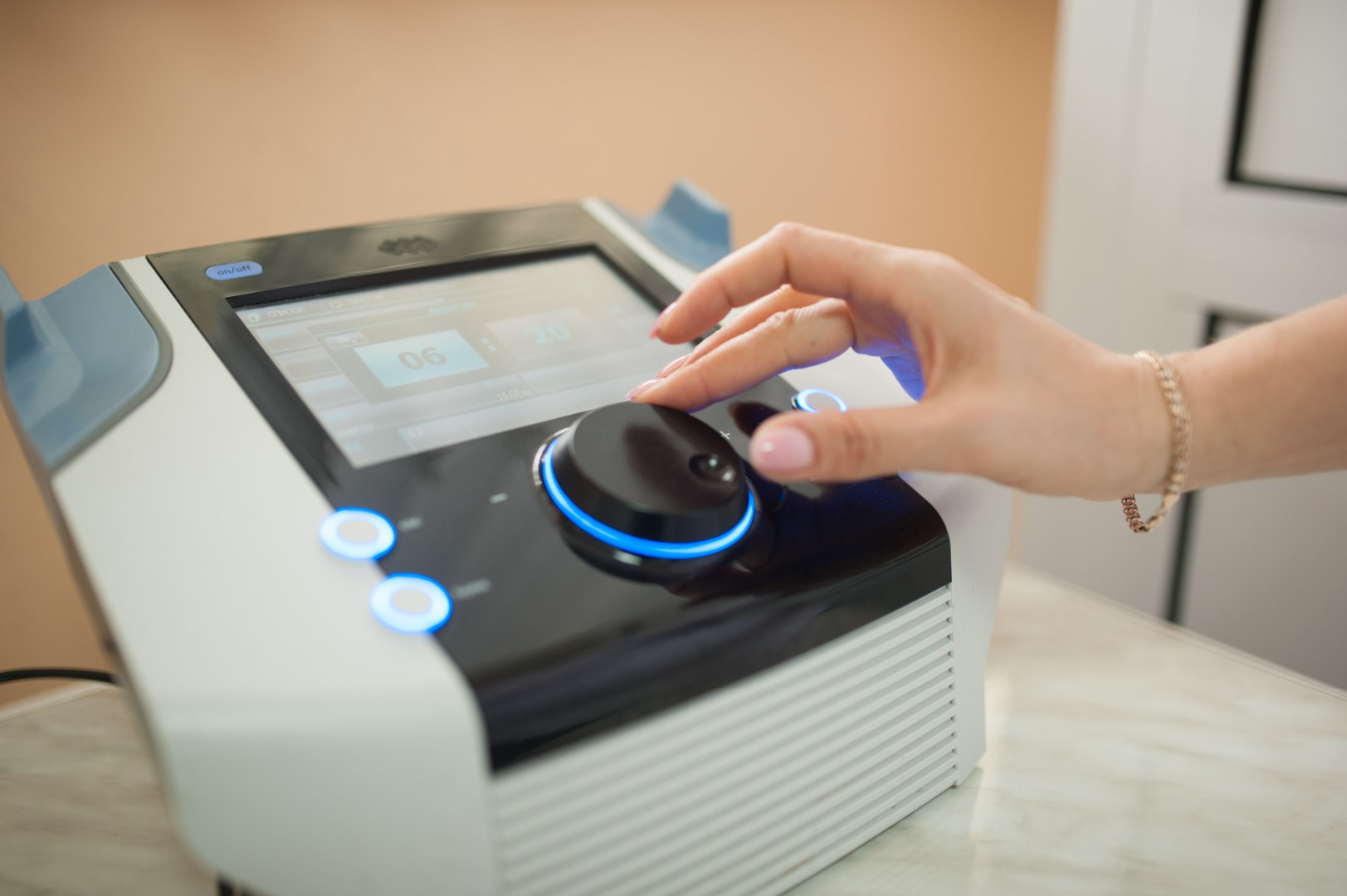In the sanatorium "Yaselda" is widely used pulsed currents for the treatment of various pathological conditions. The pulse current is a separate "portions, pushing" current.
Physiologic response to passage of each pulse is the contraction of the muscles under the electrodes. These currents are represented in the sanatorium "Yaselda" electrical stimulation, diodinamotherapy, amplipuls-therapy, fluctuating, interference currents.
Effects
Pulsed currents are the main therapeutic effects:
- anti-inflammatory
- analgesic (anesthetic)
- vasodilator
- muscle relaxant(relaxing)
- metabolic
- regenerative
- recovery from paralysis and paresis
The physiological effects on the body manifests a pronounced influence on the neuromuscular system, they have antispastic, vasodilating effect, activates metabolic processes, improves trophism in the tissues.
In the sanatorium "Yaselda" apply physiotherapeutic devices, "combines" series "PHYSIOMED", "ВТL"
Pulse currents
The effect of pulsed DC current depends on the pulse shape, duration and intensity of the pulses, frequency of pulses.
Pulse currents of low frequency medicine are used to perform the following tasks:
- for electro-stimulation of muscles
- to combat the pain syndrome, elimination disorders of blood circulation and trophic
- for the introduction of pulsed current drugs (electrophoresis)
Electrical stimulation
Electrical stimulation - the application of pulse current with preventive or therapeutic purposes for the institution or increase activity of the neuromuscular apparatus (NMA) of certain organs or systems. These include the skeletalI the smooth muscles
Effects
Excitation of activity of a muscle pulsed electric current prevents the progression of the reactions of degeneration, keeps the muscle to the period of reinnervation. During electrical stimulation also accelerates the recovery of damaged nerve fibers. The goal of electrical stimulation is the optimal physiological effect (muscle contraction), with the least side effects.
Distinguish between transverse and longitudinal methods of electrical stimulation. Transverse technique is recommended when lesions of the internal organs, single joints, and scar-adhesive changes. The longitudinal methodology used in the effects on the peripheral nervous system, blood vessels and striated muscle
Testimony
- Primary atrophy of the muscles associated with damage to peripheral neurons; flaccid paralysis and paresis
- Secondary muscle atrophy associated with prolonged immobilization, joint disease
- Myopathic paralysis and paresis
- Paralysis and paresis of the muscles of the larynx
- Hypomotor dyskinesia of the internal organs
Contraindications
Tromboliticescoe processes, gallstone and renal stone disease, acute cerebral and coronary circulation, valvular heart disease, acute inflammatory disease, febrile status, bone fractures in the first days after immobilization, dermatitis, eczema, tendency to bleeding and tumors, spastic paralysis and paresis.
Diadynamic
Therapeutic effects of constant currents with a sine pulse shape with frequency 50 and 100 Hz, which are used separately or in continuous alternation in the composition of short or long periods.
Effects
Therapeutic effects: mineralienborse, analgesic, vasoactive, trophic, metabolitesiy, allergen, toning. Diadynamic currents the action on the paravertebral area and restore the broken system of spinal inhibition. This leads to a reduction of the increased muscle tension associated with pain (breaking the vicious circle of pain).
Testimony
General inflammatory changes in organs and systems, pain, hypertension, diarrhea muscular-tonic syndromes, disorders of the chair; Raynaud's disease; disorders of the joints; deformities of the spine, defiguration joints; allergic, cephalgic state; polyneuropathy; neuropathy; encephalopathy; in dyskinetic (spastic and atonic), zerebrasteniceskie, atrophic, radicular, radicular and vascular, reflex syndromes.
Diadynamic currents are applied to the electro-myostimulation with paresis of the muscles with Unsharp pronounced qualitative and quantitative changes of elektrovozoremontnij muscle (partial reaction of degeneration of type A), the atrophy, the intestinal paresis and neurogenic bladder, enuresis, toxic polyneuropathies with sensory and motor disorders, uterine bleeding, and biliary dyskinesia on hypotonic type.
SMT (amplipulse)
Amplipulse — treatment sinusoidal modulated currents (SMC).
Effects
The therapeutic effect of the Impact of SMT intensificare metabolic processes, improves trophic tissue, prevent muscle atrophy when their forced inaction.
Testimony
Using different types of modulation and their combinations, SMT is used in the following pathological conditions:
- diseases of the peripheral nervous system with painful events (neyromiozit, neuralgia, lumbago, other reflex syndromes — lumbalgia, cervicalgia, etc.; vertebrogenic radicular SYNdrôme (radiculitis) different levels)
- diseases of the nervous system with vegetative-vascular disorders and venous disorders
- diseases of the nervous system with movement disorders in the form of Central and peripheral paresis
- hypertension 1,2,3 degree
- atherosclerotic obliteration of the vessels of the extremities, chronic lymphedema of the legs, post-traumatic swelling and pain;
- diseases of the digestive system (chronic gastritis with secretory insufficiency, gastric ulcer and duodenal ulcers in phase of exacerbation and incomplete remission, functional disorders of the pancreas, the early complications after surgery for peptic ulcer disease, replacethat, hypotonic and hypokinetic disorders of the biliary tract and the gallbladder to the absence of stones, functional liver disorders, dyskinetic constipation)
- violation of fat metabolism of exogenous-constitutional nature
- diabetes
- diseases of the respiratory system (prolonged exacerbation of chronic pneumonia, mild bronhoektaticheskaja syndrome, chronic bronchitis, bronchiectasis outside the acute stage, bronchial asthma, mild and moderate degrees of early manifestations of pulmonary heart disease and the initial stage of decompensation)
- rheumatoid arthritis with minimal and average activity process, arthrosis, periarthritis of
- chronic inflammatory diseases of the female reproductive system, including complications infertility
- impotence of functional character men
- chronic prostatitis, tsistalgiya, bedwetting in children, urinary incontinence in women, kidney stone disease (with the aim of expulsion of ureteral stones)
- inflammatory and degenerative diseases of the anterior and posterior eye
Contraindications:
- increased body temperature
- acute inflammation
- unfixed bone fractures
- fresh hemarthrosis
- malignant neoplasms
Inductothermy
Inductothermy – the therapeutic application of low frequency (1-150 Hz) beat to relieve pain.
Effects
Interference currents stimulate the differentiation of osteoblasts, granulation tissue. Therapeutic effects: analgesic, mineralienborse, trophic, metabolic, defibrotide, decongestants, allergen and vasoactive.
Testimony
Inductothermy shown in the following main syndromes: allergic; menopause; cephalgic; polyneuropathy; neuropathy; dyskinetic (atonic and spastic); atrophic; dystonia; nerve root; radicular and vascular; reflex; inflammatory changes; pain; respiratory diseases; presence of fluid in the pleural cavity; hypertension, diarrhoea, disorders of the chair; exocrine pancreatic insufficiency; Raynaud's syndrome; disorders of the joints; deformities of the spine, defiguration joints.
Contraindications
In addition to the General contraindications, inductothermy not shown in the following syndromes: General acute inflammatory changes; intoxication; the heart rhythm disorders; hypotensive; thrombophlebitises; phlebothrombosis; jaundice; hepatic and renal colic; convulsions; muscular-tonic; the violation of the integrity of tissues in the region of the electrodes; vestibular; meningeal; CSF hypertension.
Fluctuating
Fluctuating – one of the methods of electrotherapy, based on the use of alternating partially rectified and the rectified current low voltage with randomly varying frequency and amplitude. These currents have been called fluctuating (from fluctuatio, which means that random deviations from the average values), and their therapeutic-prophylactic use – of fluctuorization.
Effects
The main therapeutic effects are considered to be analgesic, local myostimulating, inflammatory, Tropico-regenerative. When the therapeutic use of fluctuorization is also taken into account caused by fluctuating currents strengthening of regional blood flow, increase nonspecific resistance of the organism, reducing swelling of tissues, improvement of the functional state of the muscles, increase the pharmacological activity of chemotherapeutic and other drugs.
Contraindications
Malignant neoplasms, tromboliticescoe processes, vibration disease, acute infectious diseases, hemorrhagic syndrome, hypertensive crisis, aortic aneurysm, neurosis obsessive-compulsive disorder, a tendency to bleeding, Meniere's disease, individual intolerance current.

